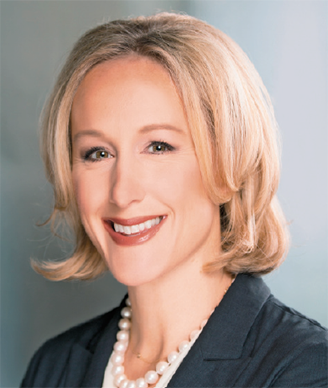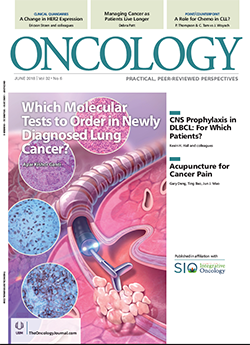Debra Patt on How the Management of Cancer Is Changing as Patients Live Longer
In this Q&A, we discuss cancer care trends and how the management of cancer is changing as patients live longer.
Oncology (Williston Park). 32(6):274-5.

Debra Patt, MD

1. Could you outline two cancer care trends you have been seeing over the last year?
Dr. Patt: Absolutely. We see a lot of new trends in cancer; it’s an amazing time to be an oncologist because there are so many more treatments available, and many of the newer treatments are revolutionary. What I have seen over the last year is that patients are getting more therapies that are related to tumor mechanism and that are less toxic than traditional chemotherapy. There is still a role for chemotherapy in many cancer types, but more and more treatments are being targeted to hit a molecular mechanism-or we see immunotherapies that harness the patient’s own immune system to fight cancer.
Another trend is that there are increasing numbers of cancer survivors. So, we know that we do a better job either curing cancer, or rendering cancer a chronic disease. At the same time, we have a population that is aging, which means we are seeing more cancers diagnosed. The natural consequence of those two trends is that there is an increase in survivorship. By 2024, it is estimated that we will have 19 million survivors of cancer in the United States. That population is growing, and they have some special needs.
2.What do we know about how that population is increasing-and conversely, how are cancer death rates decreasing?
Dr. Patt: What we are seeing are two interesting trends. One is that the age distribution of the population is changing. As the baby boomers age (cancer being a disease that is largely related to aging), we know that more cancers will occur due to the natural consequences of people living longer. More people are getting cancer, but more cancers are being cured or being treated as a chronic illness. So, what we have is a growing population of cancer survivors; because the number of survivors is growing so much, this has really fostered a renewed interest in cancer survivorship.
Within Texas Oncology, this year we have launched “Survive and Thrive” symposiums to support this patient population differently. Fifteen years ago, we saw cancer treatment as our main role as oncologists, but now the paradigm has shifted to where we now support patients through chronic phases of treatment. Along with that, supporting cancer survivorship with good health, good nutrition, and robust exercise, as well as understanding some of the long-term complications of disease and treatment, all become a critical component of supporting cancer patients, so that they continue to survive and thrive.
3. What are some of the ways that follow-up care of cancer survivors by oncologists and other healthcare providers is evolving?
Dr. Patt: Follow-up care is evolving quite a bit. Initially when we see patients for follow-up, it’s to look for disease recurrence. That is more common shortly after a patient has completed treatment, but this becomes less and less common the further out a patient is from their initial diagnosis and treatment.
So, you begin to weigh different priorities, and the purpose of follow-up visits becomes not just to survey patients to look for evidence of cancer recurrence, but also to look for chronic problems that may be related to the treatment of their cancer-and to make sure that patients have healthy behaviors to help prevent secondary cancers from occurring.
4. Lastly, is the increase in survivorship also changing the way patients are managed during their cancer treatment?
Dr. Patt: It is, and there are a few reasons for this change. As we discussed, the number of cancer survivors is increasing. But there has also been a shift in the way we treat cancer. We used to think about acute cancer care only, treatments that we either gave or didn’t give, and patients either survived it or they didn’t. Treatment was usually something that was administered over a limited period of time.
These days, many of our treatments are more chronic in nature, so patients live with their cancer as a chronic disease. This means that I could treat patients over many years, supporting them in healthy choices. As an example of that, one of my patients has an advanced kidney cancer. He is an engineer in his 50s and he is a runner; he runs 100 miles at a time. He is on a chronic therapy, pills that he takes twice a day, and has been for many years. Every time I scan his body to look for the advanced cancer that I know is there and metastatic, I don’t see it and have not seen it in years. Treating him is more about how to manage the side effects of his treatment and how we can support his therapy to make sure that he lives well and is healthy over a long period of time. The treatment does have some toxicity that challenges him on his runs, and can make his feet hurt, so my goal is for him to continue to be healthy while he lives, hopefully for many years, with an advanced chronic cancer.
We are fortunate to have innovation in cancer care that has led to more wins and truly redefines how we play the game. Our goals are to provide the highest quality of care we can, close to home. As cancer patients experience increasing cure rates and more positive outcomes, we want them to do it on their terms-sleeping in their bed at night next to their spouse, working the job that they enjoy if that is what they prefer, continuing to be active in their personal health and wellness and their family’s livelihood. We must continue our commitment to research and to improving the quality of community cancer care in our practices to help our patients achieve these goals.
Financial Disclosure:Dr. Patt has no significant financial interest in or other relationship with the manufacturer of any product or provider of any service mentioned in this article.
